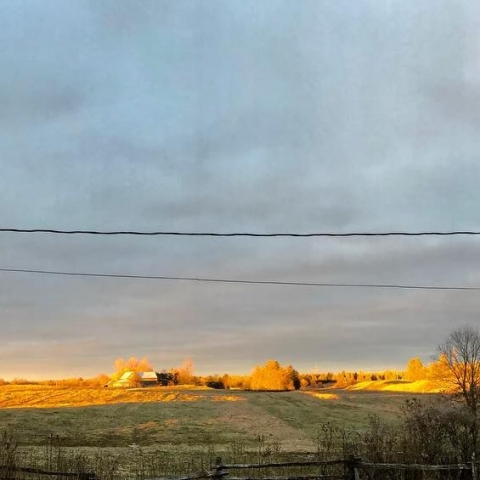
One of the questions I have been exploring is whether education can play a transformative role in treaty relationships. If it can, what might this look like? Is there sometimes a need for segregated spaces so Indigenous children have access to the knowledge holders and Elders without having to worry about knowledge that can be shared more widely and knowledge that belongs within a community? One of my educators/mentors, Nicole Bell believes that “the time has come for all nations to share their knowledge for the good of the planet that we all share. The teachings of the Anishnaabe people have insights to offer the discourse and practice of environmental sustainability” (2013, p. 89). I envision a setting where children from different nations can learn from and with each other, but also beside each other, much like within the Two Row Wampum, where we each have our own vessels in which we travel down the river. By learning together and then creating spaces for learning separately, we can each consider our own responsibilities within a treaty partnership, while valuing the knowledge of each other.
Understanding treaties is a starting point for considering how to move forward toward respectful cross-cultural relationships in Canada. A friend and colleague, Phil Abbott, explains, “Treaties were often seen as the end of something, and maybe that explains why they were not talked about a lot in school. The irony of this is that treaties are the legal basis for non-Indigenous people to be here and are central to our history of this place…” As settlers on this land, we must learn more about our relationship as treaty people as a way of showing respect to Indigenous people who lived here before. Using treaties to teach responsibility and respect is a way of moving forward along the same river in peace. Currently that is not universally the case, but many people are working hard toward a new way of teaching Indigenous education, some under the banner of decolonization and reconciliation. Leanne Simpson, though, warns that the term “reconciliation” as it is frequently employed, “neutraliz[es] the legitimacy of Indigenous resistance,” and that “reconciliation must be grounded in cultural generation and political resurgence” (2011, p. 22). Education is political work, as we teach the next generation how to exist in their communities.
Settler educators must understand the importance of supporting Indigenous resistance, resurgence and perhaps even refusal to work within a colonial framework. Settler educators’ work of reconciliation is rooted in following the lead of Indigenous educators, and responding to the many clearly articulated actions, including the Truth and Reconciliation Commission’s Calls to Action (2015). It is settler who have the reconciling to do, not Indigenous people, and “the hows, whys and whens of decolonization must come directly from . . . Indigenous peoples themselves” (Victor in Clark et al., 2014, p. 754). Any efforts by settlers must be toward supporting cultural and political resurgence by Indigenous people rather than creating our own approaches. This can only be done in relationship and consultation with Indigenous people, organizations and communities.
In his talk on November 9, 2017, Phil Abbott put forward several tangible ways that settlers can take up their treaty responsibilities:
- Hold Governments to account
- Acknowledge your privilege
- Not take up too much space
- Recognize where you live
- Learn the history of settler colonization
To me what this means for Early Childhood Educators is taking action to uphold treaties, spending time reflecting on our own social identities, making sure to centre Indigenous and other marginalized voices in the classroom, learning and teaching about the land we are living and working on, and learning as much as we can about the problematic history of our country and sharing that with our colleagues and peers. As settler educators, we should always take our direction from Indigenous people when it comes to how to proceed as treaty partners; however, we should also take responsibility for following through on those actions in order to build trusting relationships.
